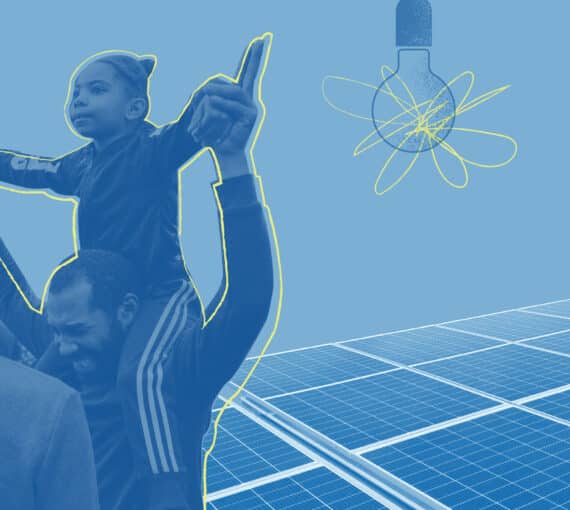
The parliamentary budget officer released a report that should have promoted understanding of how carbon pricing affects household budgets. Instead, it provided a partial answer that led some to the wrong conclusions and further attacks on carbon pricing. (Photo: Chris LeBoutillier via Unsplash)
Among other responsibilities, the parliamentary budget officer is tasked with providing economic and financial analysis to raise the quality of parliamentary debate. Unfortunately, though, the officer needlessly set off a firestorm with a recent report on the distributional impacts of the federal fuel charge.
Rather than promote understanding of how pricing carbon affects households’ budgets, the PBO’s analysis provided a partial answer that led some to draw the wrong conclusions and to double down on their attacks on carbon pricing.
The first part of the PBO’s report is accurate and well communicated. It shows that even as the fuel charge increases to $170/tonne in 2030, rebates grow accordingly, and 80 per cent of families come out better off. It also shows that the rebate policy is “broadly progressive,” as the government intended, with the poorest households coming out ahead.
Unlike the majority of PBO reports, the second part of the report goes beyond counting the charges paid and the rebates returned, by modelling the employment and investment impacts of the levy. When these are added up, the PBO’s model suggests a net cost for most Canadians by 2030-31.
Critics eager to axe carbon pricing seized upon the report, ignoring the first part of the analysis and using the economic impact figures from the second part to argue that, despite rebates, most households will see a net loss. They accused the government of misleading Canadians.
Critics eager to axe carbon pricing seized upon the report, ignoring the first part of the analysis and using the economic impact figures from the second part to argue that, despite rebates, most households will see a net loss. They accused the government of misleading Canadians.
Modelling the broader implications of the fuel levy can be useful, as long as those using the results understand what scenario was modelled and what impacts were considered. In this case, the broader effects that the PBO provides are relative to a scenario where Canada has no climate policies. But Canada has committed to and is legally obligated to take climate action, and so measures must be put in place that drive down emissions. There is no political party proposing to do nothing. The PBO’s analysis would have been on firmer ground had it compared the carbon levy to the effects of other policy approaches (like a mix of regulations and subsidies) that achieve the same emissions reductions.
Had the PBO’s alternative scenario been policies designed to achieve equivalent emissions reductions, the fuel levy would probably have looked good by comparison. More stringent regulations and more generous subsidies to encourage households and businesses to reduce emissions tend to be more costly, and could well skew toward benefiting the rich.
A more accurate accounting of costs and benefits would also have at least mentioned the fact that carbon pricing is aimed at reducing Canada’s contribution to climate change, and people living in Canada already feel the costs of the world failing to do that. Increasing and more intense forest fires, atmospheric rivers that wipe out highways, killer heat domes and rapidly melting permafrost represent real and rising costs — costs that, without effective climate action, will continue to escalate. The Canadian Climate Institute estimates that climate change and responding to more extreme and frequent weather events costs about $720 per person annually. By 2050, those costs are expected to rise to between $1,900 and $2,300 per person.
The Canadian Climate Institute estimates that climate change and responding to more extreme and frequent weather events costs about $720 per person annually. By 2050, those costs are expected to rise to between $1,900 and $2,300 per person.
Further, looking only at costs leaves the economic benefits of carbon pricing out of the picture. Carbon pricing, along with other climate policies, sets Canada up to compete in the global green economy of the future, with tangible benefits from new investment, as we’ve seen with the accelerated deployment of renewable energy projects in the Prairies and electric vehicle manufacturing in Ontario.
Setting aside the problem with only looking at costs, the PBO’s findings hardly deserve the headlines they generated. The costs the PBO documents are not losses relative to their situation today, but are relative to the income that households would have, given economic growth that is projected to occur by 2030 without the carbon levy. This is a hypothetical loss in a model, not a reduction in real-world incomes, and it amounts to a modest one to two percent in seven years. (Assuming that the economy will keep growing if climate action stalls and warming continues unabated is problematic, but we’ll leave that for another day.)
When it comes to carbon pricing, supporting better debate will require more complete analysis and better communication.
Related projects
Always grounded in sound evidence, the David Suzuki Foundation empowers people to take action in their communities on the environmental challenges we collectively face.




